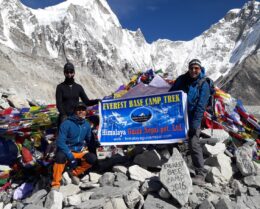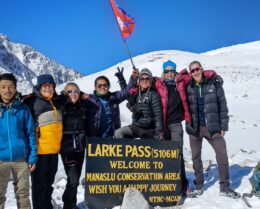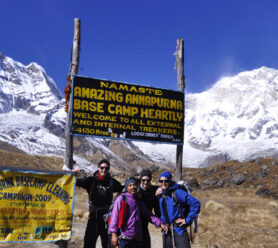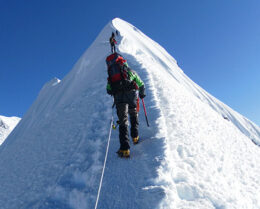The Western Route of Upper Mustang Trek-Explore Lo Manthang
PUBLISHED ON 3 August, 2023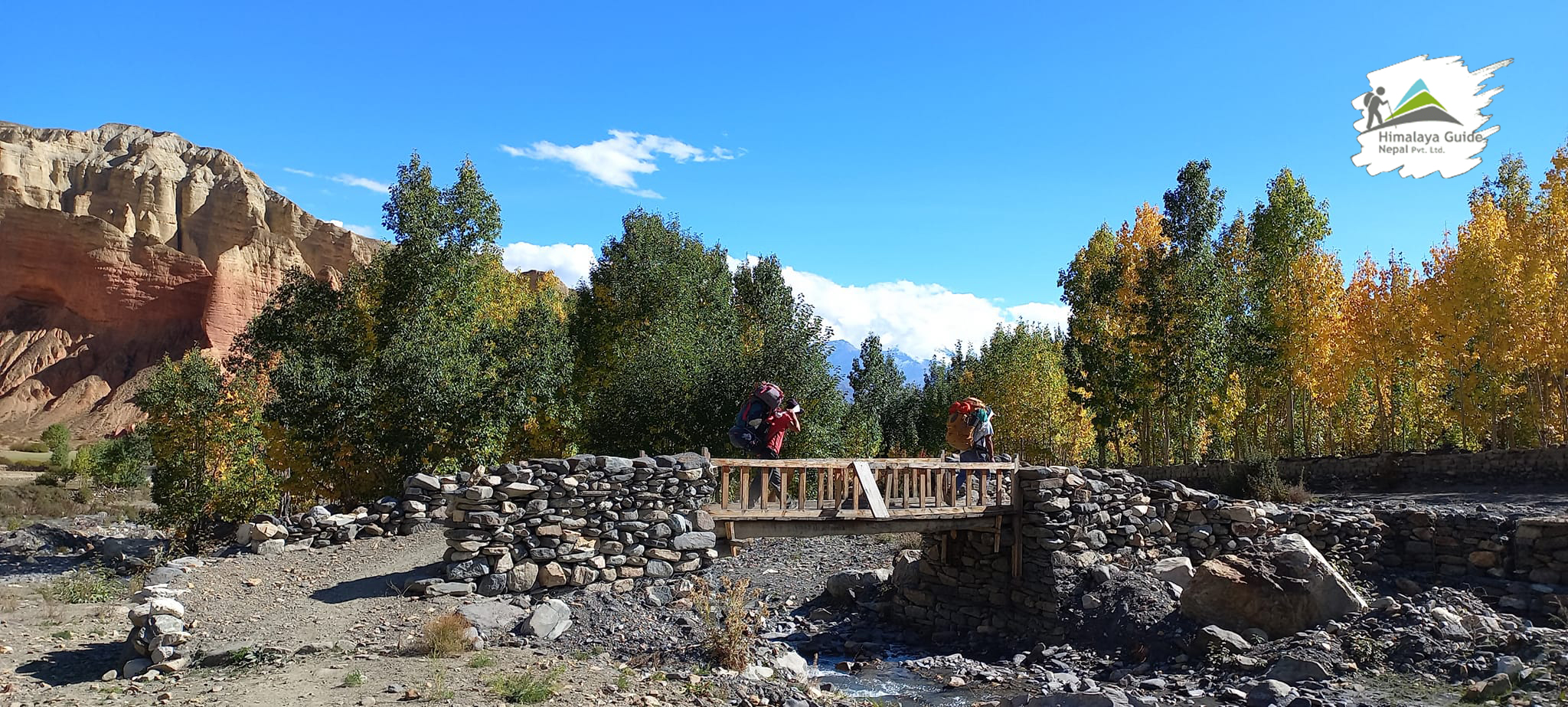
Nestled in the lap of the mighty Himalayas, the Western Route of the Upper Mustang Trek offers a captivating journey through the mystical kingdom of the Upper Mustang. Furthermore, this unique blog invites you on a memorable adventure, unveiling hidden gems, ancient caves, and breathtaking landscapes. Additionally, prepare to immerse yourself in the wonders of this trek as we explore each stage of the journey, making every step easy and enjoyable.
The Enchanting Kingdom of Upper Mustang
Located in the northern region of Nepal, Upper Mustang is a restricted area that was once a part of the Tibetan Kingdom. Known as the “Last Forbidden Kingdom,” this region remained off-limits to foreigners until 1992.
The preservation of its ancient culture and unspoiled beauty has made the Western Route of Upper Mustang Trek a dream destination for adventurous souls.
The journey to Upper Mustang starts with obtaining the required permits. This includes the Restricted Area Permit (RAP) and the Annapurna Conservation Area Permit (ACAP).
We suggest hiring a guide, not only for ensuring a safe and well-guided trek but also for gaining valuable insights into the local culture, traditions, and history. These guides are an invaluable source of information about the region, and their expertise will enrich your experience.
Preparing for the Trek
Before starting on this epic journey, proper preparation is important. The trek takes you through high altitudes, where the weather can be unpredictable, and the terrain can be challenging. Adequate physical fitness and acclimatization are crucial for a successful trek.
Start by conditioning your body with regular exercises and cardio workouts. Focus on building strength in your legs, as they will bear the brunt of the trek. Aerobic exercises will improve your lung capacity, helping you cope with the reduced oxygen levels at higher altitudes. Practice walking with a backpack, gradually increasing the weight to get accustomed to carrying your gear during the trek.
Packing smartly is another vital aspect of preparation. Make sure to carry essential trekking gear, including comfortable clothing suitable for both warm and cold conditions. Layers are key to adapting to the varying temperatures you’ll encounter during the trek.
A good quality pair of trekking boots is essential to protect your feet and provide the necessary grip on uneven terrain. Don’t forget to pack a first aid kit, water purifier, and a high-quality sleeping bag.
A Typical Itinerary for the Western Route of the Upper Mustang Trek:
Day 1: Fly from Kathmandu to Pokhara (approximately 25 minutes) and explore Pokhara.
Day 2: Fly from Pokhara to Jomsom (2,720 meters/8,924 feet) and trek to Kagbeni (2,810 meters/9,219 feet).
Day 3: Trek from Kagbeni to Chele (3,050 meters/10,006 feet).
Day 4: Trek from Chele to Syangboche (3,800 meters/12,467 feet).
Day 5: Trek from Syangboche to Tsarang (3,620 meters/11,874 feet) via Ghami.
Day 6: Trek from Tsarang to Lo Manthang (3,810 meters/12,500 feet), the capital of Upper Mustang.
Day 7: Explore Lo Manthang and its surroundings. Visit monasteries, palaces, and ancient caves.
Day 8: Trek from Lo Manthang to Ghami (3,520 meters/11,549 feet).
Day 9: Trek from Ghami to Samar (3,290 meters/10,794 feet).
Day 10: Trek from Samar to Kagbeni.
Day 11: Trek from Kagbeni to Jomsom.
Day 12: Fly from Jomsom to Pokhara and spend the rest of the day exploring Pokhara.
Day 13: Drive or fly back to Kathmandu from Pokhara.
Jomsom: Gateway to the Hidden Kingdom

The adventure begins in Jomsom, a bustling town in the Mustang region. As you step into Jomsom, you’ll be greeted by the scenic beauty of the Annapurna and Dhaulagiri mountain ranges. Additionally, the town itself is situated in the Kali Gandaki Gorge, the deepest gorge in the world, adding to the natural splendor of the area.
Jomsom is easily accessible by flight from Pokhara, making it a popular starting point for trekkers. However, some trekkers may also choose to embark on the trek from lower altitudes and gradually ascend to Jomsom. Consequently, this allows for better acclimatization.
Moreover, the town offers various amenities and facilities, including lodges, tea houses, and shops where trekkers can stock up on supplies. Take a moment to acclimatize and explore this charming town before starting your trek toward Upper Mustang.
Kagbeni: A Gateway to the Mystical World

Moving along the Kali Gandaki River, you’ll reach Kagbeni, a picturesque village that marks the official entrance to Upper Mustang. In addition, Kagbeni exudes an old-world charm, with its narrow alleyways, traditional mud-brick houses, and prayer flags fluttering in the wind.
Moreover, this ancient village holds significant cultural importance as it served as a major trade route between Nepal and Tibet in ancient times. The red-walled Kag Chode Thupten Samphel Ling Monastery, dating back to the 15th century, is a prominent landmark that reflects the rich spiritual heritage of the region.
As you traverse through Kagbeni, the landscapes start to change. Consequently, it offers a glimpse of the mystical beauty that lies ahead in Upper Mustang.
Lo Manthang: The Ancient Walled Capital

Prepare to be awestruck as you reach Lo Manthang, the ancient walled capital of Upper Mustang. This unique settlement, surrounded by imposing walls, houses ancient monasteries, royal palaces, and captivating Buddhist art.
Moreover, the town’s strategic location played a crucial role in controlling the salt trade between Tibet and Nepal, contributing to its historical significance.
The Lo Manthang Palace is the King’s Palace. It is an architectural marvel that showcases the artistic brilliance of the ancient kingdom. Furthermore, the palace, with its intricate woodwork and murals, provides a glimpse into the royal lifestyle of bygone eras.
One of the highlights of visiting Lo Manthang is the Tiji Festival. Celebrated annually, this vibrant event is a spiritual spectacle where locals perform masked dances to ward off evil spirits and bless the community with peace and prosperity. Consequently, this colorful festival adds an extra layer of cultural significance to the already enchanting town.
Exploration of Lo Manthang’s Caves
Beyond its historical significance, Lo Manthang is famous for its intriguing caves. The Sky Caves of Mustang date back thousands of years and are adorned with ancient murals and artifacts.
These caves served as dwellings, meditation chambers, and burial sites for ancient civilizations, offering a fascinating glimpse into the lives of the people who once inhabited this mystical region.
Exploring these caves is like stepping back in time. You can witness the stories and legends etched on the cave walls. Some caves contain ancient manuscripts and precious artifacts, providing valuable insights into the history and culture of Upper Mustang.
Chhoser: The Hidden Gem
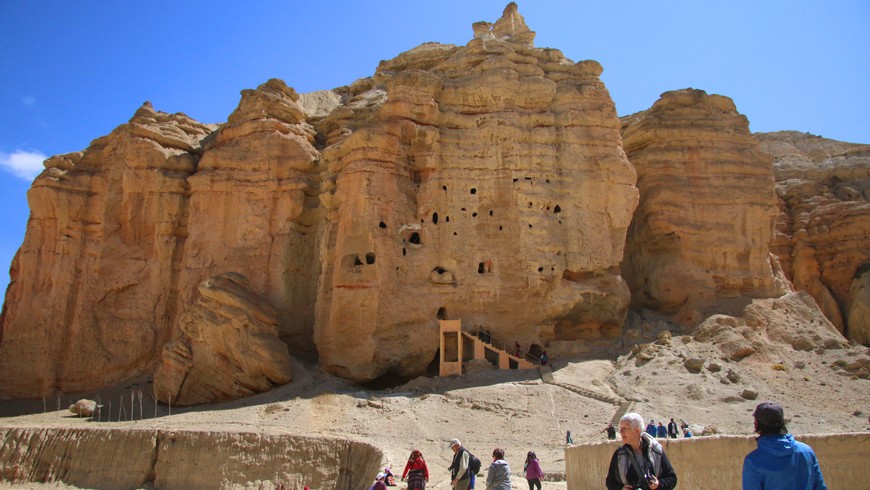
While most trekkers stop at Lo Manthang, the Western Route offers a rare opportunity to visit the lesser-known village of Chhoser. This hidden gem boasts a monastery that houses a gigantic statue of Maitreya Buddha, also known as the Future Buddha, adding a spiritual aura to the village.
Moreover, Chhoser provides a serene setting to meditate and immerse yourself in spirituality. The peaceful environment, far from the bustling world, allows you to reflect and connect with your inner self, making it a truly transformative experience.
The Mesmerizing Landscapes
As you trek through the Western Route, the ever-changing landscapes will leave you spellbound. Moreover, the journey takes you through diverse terrains, ranging from arid desert-like landscapes reminiscent of the Tibetan Plateau to lush green valleys dotted with ancient monasteries and traditional villages.
Crossing through high mountain passes provides panoramic views of snow-capped peaks that seem to touch the heavens. Furthermore, the dramatic contrasts between the barren landscapes and the vibrant green oases make this trek an unforgettable visual feast.
Consequently, every step of the way reveals new and breathtaking vistas, making the Western Route of Upper Mustang Trek a truly awe-inspiring adventure.
The Warmth of Local Hospitality
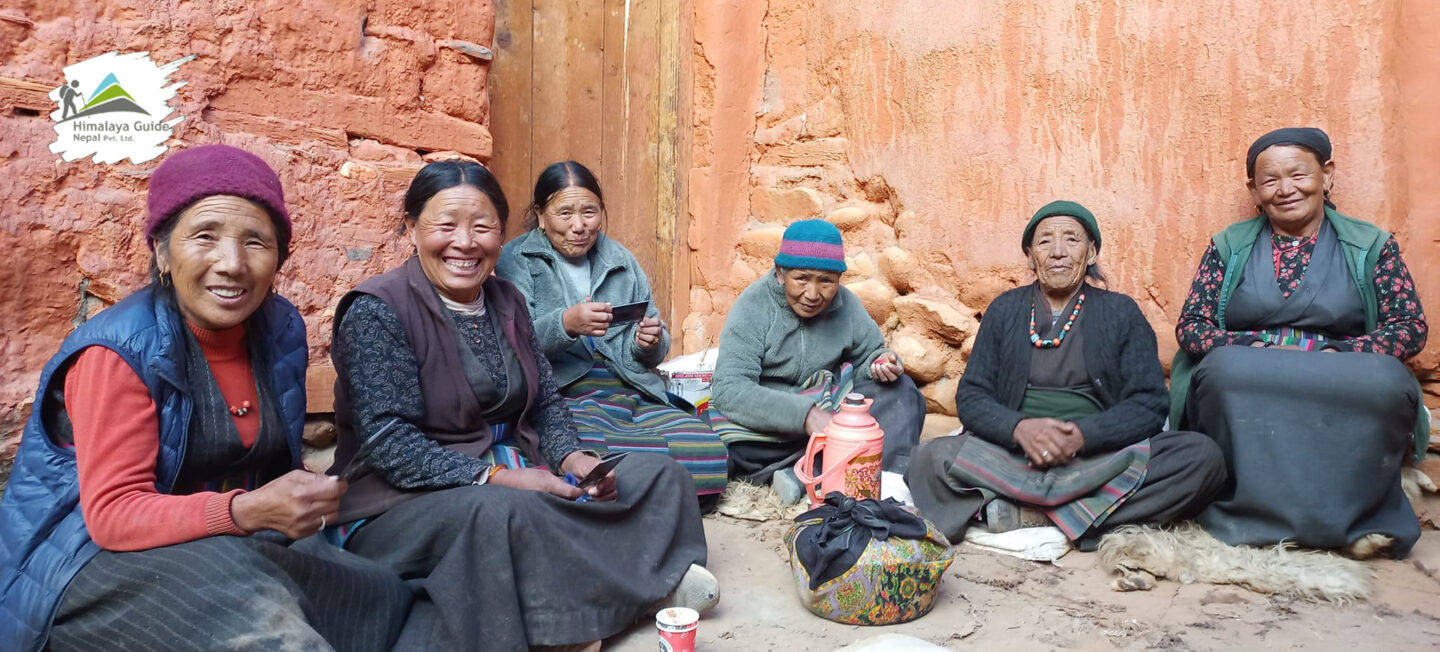
The heartwarming hospitality of the locals is another highlight of this journey. The people of Upper Mustang welcome trekkers with open arms, offering insight into their unique way of life and traditional customs.
Engaging with the locals provides a rare opportunity to learn about their customs, celebrate their festivals, and understand their daily struggles and joys.
Additionally, enjoying a warm cup of tea in the local teahouse, participating in traditional ceremonies, or simply conversing with the friendly villagers will leave you with lasting memories of the kindness and warmth of the people of Upper Mustang.
Challenging Yet Rewarding: The Trek’s Difficulty
Though the Western Route of the Upper Mustang Trek poses certain challenges, the rewards are beyond compare. The high altitudes and rugged terrain demand physical endurance, but the stunning vistas and cultural immersion make every step worthwhile.
The trek includes several high passes, such as the Nyi La Pass at an elevation of 3.932m (12900ft) above sea level. It involves navigating through rocky and sometimes steep trails. Altitude sickness is a real concern, and it is crucial to acclimatize properly and listen to your body throughout the journey.
The challenging terrain, however, rewards you with a profound sense of accomplishment and a deep connection to nature. Moreover, witnessing the untouched beauty of Upper Mustang and experiencing the richness of its culture and history make this trek an experience like no other.
What will you come across on the Western Route of Upper Mustang?
- Ancient Villages and Monasteries: Explore charming ancient villages like Kagbeni and Lo Manthang, with traditional mud-brick houses and intricate monasteries.
- Lo Manthang Palace: Visit the King’s Palace, an architectural marvel with exquisite woodwork and ancient murals.
- Tiji Festival: If you time your trek right, witness the vibrant Tiji Festival in Lo Manthang, featuring colorful masked dances performed by monks.
- Sky Caves of Mustang: Explore ancient caves with murals, artifacts, and human remains. Furthermore, It offers a glimpse into the lives of past inhabitants.
- High Mountain Passes: Cross several high passes, including Nyi La Pass, for breathtaking views of snow-capped peaks and dramatic landscapes.
- Mesmerizing Landscapes: Trek through diverse terrains, from arid deserts to lush green valleys, creating an unforgettable visual journey.
- Local Hospitality: Experience the warm hospitality of the locals, eager to share their culture and way of life.
- Mysterious Caves and Hidden Gems: Discover lesser-known villages like Chhoser with a monastery housing a colossal statue of Maitreya Buddha.
- Rare Wildlife and Flora: Encounter unique wildlife like snow leopards and Himalayan blue sheep, along with colorful rhododendron blooms.
- Cultural Immersion: Immerse yourself in the local culture, attend traditional ceremonies, and learn from the wisdom of the elders.
FAQs
Is a special permit required for the Western Route of Upper Mustang Trek?
Yes, a special permit is required for the Upper Mustang region. Trekkers need to obtain both the Restricted Area Permit (RAP) and the Annapurna Conservation Area Permit (ACAP) from the Department of Immigration in Kathmandu or the Immigration Office in Pokhara.
What is the best time to undertake the Western Route of Upper Mustang Trek?
The best time to trek the Western Route of Upper Mustang is during the spring (March to May) and autumn (September to November) seasons.
How Difficult is the Western Route of Upper Mustang Trek?
The Western Route of Upper Mustang Trek is moderately difficult. Trekkers need to be physically fit and prepared for several hours of walking each day on varied terrain. This includes steep ascents and descents.
Are there accommodations available during the trek?
Yes, there are accommodations available along the Western Route of Upper Mustang. The trek passes through several villages where you can find tea houses and lodges offering basic amenities like food and shelter.
Is it possible to trek the Western Route of the Upper Mustang independently?
No, trekking the Western Route of Upper Mustang independently is not allowed. The region is a restricted area. Trekkers are required to hire a licensed guide to accompany them throughout the trek.
Conclusion
The Western Route of the Upper Mustang Trek is an unparalleled adventure. It takes you on a journey through time and tradition. From the captivating Lo Manthang to the hidden treasures of Chhoser, this trek unlocks the mystical allure of Upper Mustang.
Embrace the warmth of the locals, savor the breathtaking landscapes, and create memories that will last a lifetime. Start on this once-in-a-lifetime experience and be mesmerized by the wonders of the Himalayas.
Additionally, The Western Route of the Upper Mustang Trek is an opportunity to connect with nature, immerse yourself in ancient history, and experience the beauty of the Himalayas in its purest form.
You may also Like:

